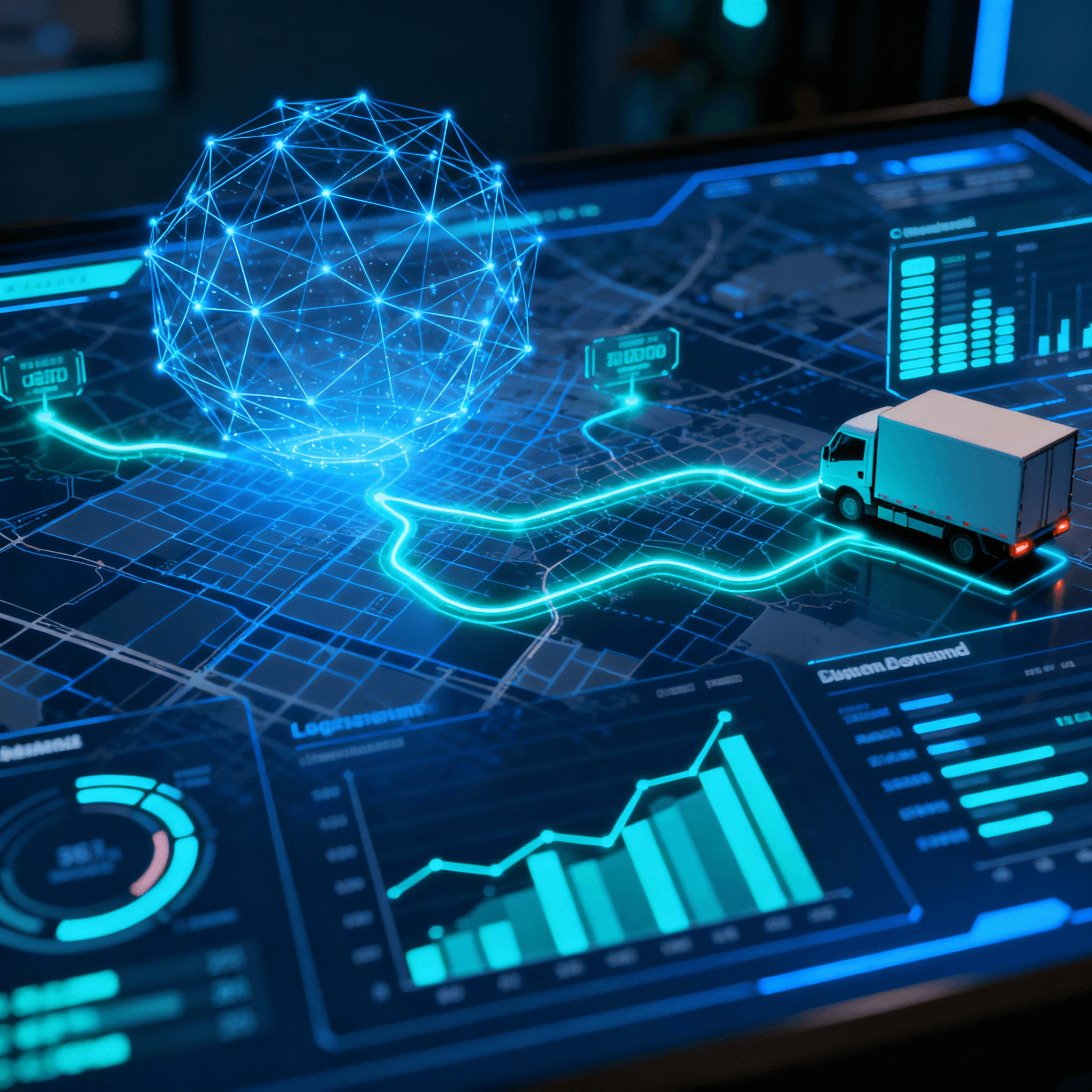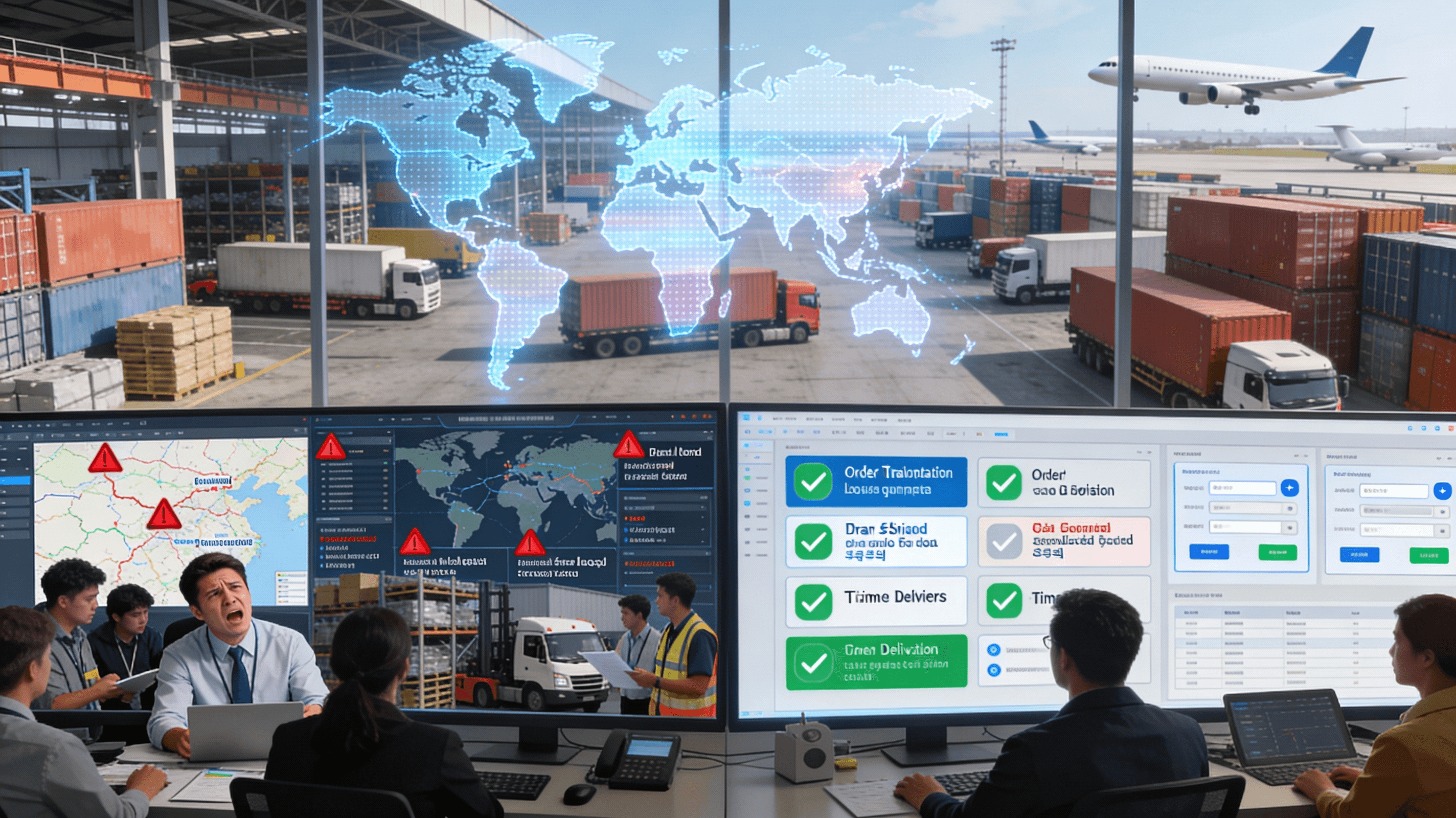Most Common AI Algorithms Used for Route Planning and Demand Forecasting?
Wednesday, 24 Sep 2025
|
What Are the Most Common AI Algorithms Used for Route Planning or Demand Forecasting?
Behind every on-time delivery and accurate inventory prediction lies sophisticated mathematics. While business leaders don't need to become data scientists, understanding the AI algorithms powering modern logistics helps inform strategic technology decisions and set realistic expectations for AI implementations.
This article demystifies the most impactful algorithms transforming route planning and demand forecasting—explaining what they do, when they excel, and how forward-thinking platforms leverage them for competitive advantage.
Curious how these algorithms translate into real-world logistics improvements? Keep reading to discover the intelligence driving smarter supply chains.
Why Algorithms Matter in Logistics AI
Algorithms are the "recipes" AI systems follow to process data and generate insights. The right algorithm can mean the difference between a route that saves 15% on fuel costs versus one that merely replicates manual planning. Similarly, demand forecasting algorithms determine whether inventory levels prevent costly stockouts or tie up capital in excess inventory.
For context on how these algorithms fit into the broader AI landscape, explore What Exactly Is AI in Logistics and Supply Chain Management?.
Common AI Algorithms for Route Planning
1. Dijkstra's Algorithm
One of the foundational pathfinding algorithms, Dijkstra's finds the shortest path between nodes in a graph—ideal for determining the fastest route between two points when road networks have varying distances.
Best for: Static route planning with fixed starting and ending points
Limitations: Doesn't adapt well to real-time changes like traffic or road closures
2. Traveling Salesman Problem (TSP) Solvers
TSP algorithms optimize routes when multiple stops must be visited in the most efficient sequence. Modern variants handle constraints like delivery time windows, vehicle capacity, and driver hours.
Best for: Multi-stop delivery route optimization
Limitations: Computational complexity increases dramatically with more stops
3. Genetic Algorithms
Inspired by natural evolution, genetic algorithms test thousands of route combinations, "breeding" the best solutions and "mutating" others to explore new possibilities. This heuristic approach efficiently handles complex constraints.
Best for: Large-scale routing problems with multiple constraints
Why it matters: Balances optimization quality with computational speed
4. Simulated Annealing
Another metaheuristic approach that explores solution spaces by accepting occasional "worse" solutions to escape local optima, ultimately converging on highly efficient routes.
Best for: Complex routing with many variables
Advantage: Avoids getting stuck in suboptimal solutions
5. Machine Learning-Based Dynamic Routing
Modern ML models analyze historical delivery performance, traffic patterns, and operational data to continuously improve routing decisions. These adaptive systems learn from every delivery to optimize future routes.
Best for: Real-time route adjustments and predictive optimization
Key benefit: Improves over time as more data is collected
To understand how ML differs from basic automation, read What's the Difference Between AI, Machine Learning, and Automation in a Warehouse Context?.
Common AI Algorithms for Demand Forecasting
1. Auto-ARIMA (Autoregressive Integrated Moving Average)
ARIMA models excel at forecasting stationary time series data—demand patterns with consistent means and no strong seasonality. Auto-ARIMA automatically selects optimal parameters, making it accessible without deep statistical expertise.
Best for: Products with stable, predictable demand
Limitations: Struggles with highly seasonal or volatile products
2. ETS (Error, Trend, Seasonality)
ETS models decompose demand into three components: baseline level, trend direction, and seasonal patterns. This makes them excellent for products with clear seasonal cycles (like holiday merchandise or weather-dependent goods).
Best for: Products with seasonal demand patterns
Advantage: Intuitive interpretation of forecast components
3. Prophet
Developed by Meta (formerly Facebook), Prophet handles complex real-world data including multiple seasonalities, holiday effects, and trend changes. It's particularly robust to missing data and outliers.
Best for: Complex demand patterns with holidays and special events
Why it's popular: User-friendly with strong performance on messy real-world data
4. XGBoost (eXtreme Gradient Boosting)
A powerful machine learning algorithm that builds ensemble models by combining multiple decision trees. XGBoost excels at incorporating diverse external factors (promotions, pricing, weather, economic indicators) alongside historical demand.
Best for: Multi-factor demand forecasting with complex relationships
Key strength: Handles large datasets with many variables efficiently
5. LSTM (Long Short-Term Memory) Neural Networks
Deep learning models capable of capturing long-term dependencies in sequential data. LSTMs remember patterns across extended time periods, making them ideal for products with complex, long-cycle demand patterns.
Best for: Long-range forecasting with complex temporal dependencies
Considerations: Requires substantial training data and computational resources
6. Temporal Fusion Transformers
State-of-the-art deep learning models that combine attention mechanisms with temporal processing, enabling interpretation of which factors most influence forecasts.
Best for: Enterprise-scale forecasting requiring explainability
Advantage: Transparency into what drives predictions
Want to understand what data feeds these algorithms? Explore What Kind of Data is Needed to Train an Effective AI Model for Supply Chain Optimization?
How debales.ai Leverages Algorithm Intelligence
At debales.ai, we don't force-fit single algorithms to every problem. Instead, our platform intelligently selects and combines algorithms based on your specific logistics challenges:
- Adaptive route optimization using genetic algorithms and ML-powered dynamic adjustments
- Multi-model demand forecasting automatically testing ARIMA, Prophet, XGBoost, and ensemble methods
- Real-time data integration ensuring algorithms operate on current conditions
- Explainable AI showing which factors drive predictions and recommendations
This approach delivers the accuracy of advanced algorithms without requiring in-house data science teams—making sophisticated AI accessible to logistics operations of all sizes.
Learn more about how predictive intelligence transforms operations in How Predictive Analytics Works for Logistics.
Choosing the Right Algorithms for Your Business
The "best" algorithm depends on your specific use case:
- Data availability: Some algorithms need extensive historical data; others work with limited history
- Computational resources: Complex deep learning models require more processing power
- Explainability needs: Stakeholders may require transparent reasoning behind predictions
- Real-time requirements: Dynamic routing needs fast computation; strategic planning allows longer processing
Modern AI platforms handle these trade-offs automatically, testing multiple algorithms and selecting optimal approaches for each scenario.
The Future: Hybrid and Ensemble Approaches
Leading logistics operations increasingly combine multiple algorithms—using ensemble methods that blend predictions from several models to achieve superior accuracy and robustness.
This mirrors how digital twins integrate various AI techniques to create comprehensive simulations of entire supply chain networks.
Moving Forward with Algorithm-Powered Logistics
Understanding these algorithms empowers better technology decisions, more realistic expectations, and strategic conversations with AI solution providers. The logistics organizations thriving in 2025 leverage algorithmic intelligence not as experimental technology but as operational foundation.
Ready to harness the power of advanced AI algorithms for your logistics operations?
Discover how debales.ai's intelligent platform automatically selects and optimizes algorithms to deliver measurable improvements in routing efficiency and demand accuracy.
Book a demo with debales.ai today and transform complex algorithms into competitive advantage.


